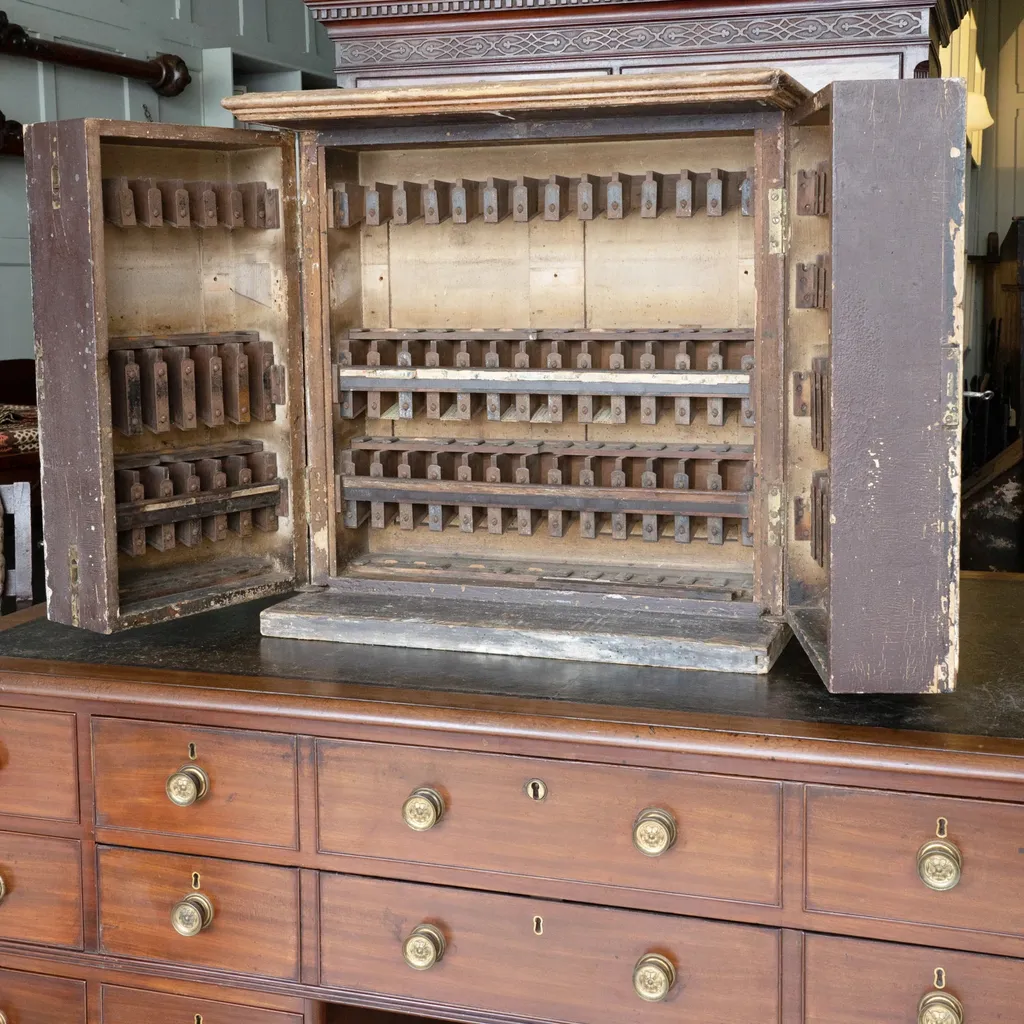Patina, for me, is everything. It reveals the wear, the history and the story of an antique. It tells you where it has been and how it has been looked after. Has it had a loving hand passed across it each morning by its owner as they’ve walked down the stairs? Has it been lavished with care and attention its whole life, like an old leather chair that its owner has carefully buffed with wax once a year, always cautious not to sit on it with keys in their back pocket?
All of these things can add a layer of patina to an antique. Mostly this is apparent in pieces loved during a period when people had the time to care for their furniture and objects. We don’t seem as able to find the time to make the little things important today. However, one of my favourite sayings: ‘Fashion fades, only style remains the same’ is by Coco Chanel and she was dead right. When I buy things for myself, it’s with the idea that I don’t need another one – ever. If you do that, you can build up your own patina on something you love, while contributing to its history.
Find out more about what patina is here.
You might also like how to add patina to a garden statue
The antiques market is recognising the beauty of items with wear more and more. Today, a piece with fabulous patina has added value at auction. I will pay much more for an item with just the right level of patination, such as a 19th-century leather desk chair with beautiful wear that you then team with a 1970s Italian desk and a mid-century lamp. The contrast is wonderful and the chair adds to the stories of everything in the room. Not only that, but its sense of history makes that piece truly unique.
My favourite object that I’ve ever bought is a toolbox that once belonged to Malcolm Campbell of Bluebird, the British racing driver who broke the land speed record nine times between 1924 and 1935. It’s painted the same blue that the Bluebird cars were all painted and, when he was knighted, ‘Sir’ was roughly added onto the box. Its story, coupled with its provenance and scale of wear, makes it special – it is history wrapped up in a box and is completely unique. There is only one in existence and it’s worth a six-figure sum. I look at this treasure and, because of its condition and wear, it makes the hairs on the back of my neck stand up. If it were restored, it might be worth considerably less.

There are still some antiques dealers who insist on highly polishing all of the pieces that pass through their hands. I go into these shops and all I see is a symphony of shiny mahogany. I visited one recently – they had a fabulous campaign chest that had never been touched. It was so worn it was like a lovely beaten up pair of comfortable old brogues. I asked if they’d sell it to me, but they declined. So I went back a month later and there it still was. They’d replaced the original brass handles, relined the drawers and polished it so much I could see my face in it. In other words, they’d sucked the heart and soul out of it. To me, it was ruined. Every time you repolish a piece, you remove a layer of history that you can never get back. Restoration isn’t always the answer. If you’re unsure whether to restore, my advice is below.
Should you restore your antiques?
- Don’t do anything straightaway.Let a piece sit and rest, ideally in the place you’ll eventually give it a home. Really think about what actually needs repair and what will make it usable. Then do the bare minimum. Just think, every time you remove a layer from an antique’s surface, it devalues the item and removes a layer of its history.
- Minimal conservation is the aim.If, for example, there is a large rip in an old leather chair, consider if a visibly new panel will be an honest repair and part of its journey. It could be.
- Get a professional to work on it.Don’t be tempted to have a go yourself – this is a task for the experts.
More from Drew Pritchard:
Inside Drew Pritchard’s converted Methodist chapel
Drew Pritchard’s sofa collection with Barker & Stonehouse
How I became an antiques dealer
How to be a successful antiques dealer
How to create country house style
How to add colour to your home
The thrill of an unexpected find
